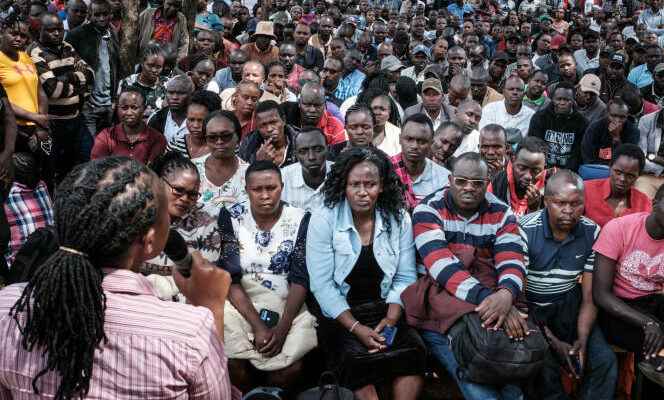To not miss any African news, subscribe to the newsletter of the World Africa from this link. Every Saturday at 6 a.m., find a week of news and debates covered by the editorial staff of the World Africa.
At the age of 60, Beatrice Atieno had never yet participated in any demonstration. But when, in July, the citizen movement Njaa Revolution (“hunger revolution” in Swahili) organized a giant march in downtown Nairobi, this single mother did not hesitate long to join the procession, holding a sign in her hands: “No food, no elections! » (“no food, no elections”). Tuesday, August 9, for the presidential election, she will nevertheless go to the polls, for lack of anything better. She will slip in a bulletin “Odinga”, she confides.
Every day, Beatrice leaves her slum of Mathare, in the Kenyan capital, on foot to reach the neighboring district of Eastleigh, a bubbling commercial hub with Somali influences. For seven hours, she washes, spins, folds laundry in one of the many traditional laundries. The pay depends on the mood of the boss. “Often he gives me 100 shillings [82 centimes d’euros]on good days it’s 200 shillings, on bad days it’s 75”, she says. Barely enough to get food once she got home.
To hold, “Sometimes I just buy a lemon, boil it in water and drink it all. It energizes and fills,” says Beatrice in front of two colleagues, who nod and say they use the same method. “In 2007, there was violence, but at least the price of food was affordable, we didn’t skip meals”she recalls, referring to the post-election violence which left more than a thousand dead in the country, including 112 in Mathare.
“How much is a kidney worth”
” There was a before and an after Covidexplains Ken Gichanga, economist at Mentoria Economics. The disarray of many Kenyans has refocused the stakes of the presidential election on the economy. The political class had no choice but to adapt. » Until now, the ballots were mainly articulated around community and ethnic springs. The social crisis is now at the center of attention. ” This is ultimately a good sign for democracy,” believes Ken Gichanga.
According to the World Bank, 33% of Kenya’s population lives below the poverty line. The Covid pandemic has pushed 2 million Kenyans into poverty, doubling the country’s unemployment rate (10.4%). In July, inflation climbed to 8.3% compared to the same period last year. A record for five years. The prices of flour, gasoline, cooking oil and other basic products have almost doubled in a year, trapping a working class already weakened by the coronavirus crisis.
You have 54.18% of this article left to read. The following is for subscribers only.
